It’s almost impossible to come up with a digital marketing strategy to spy on your competitors without consistent information regarding the trends in the niche. And, if you think that it’s only what works that matters, you may not get too far.
In order to develop a way to leverage customers’ and influencers’ behavior to your advantage, you’ll have to make yourself comfortable in the office chair and start to seriously monitor the entire niche. That’s the wonder of a free market – it has made it compulsory to weigh everything on the scale of competitive advantage.

However, it’s impossible to know what unique feature of your brand will make prospects convert unless you’re up to date with everybody else’s special ingredient. Moreover, there are also a series of tactics and free ways that aren’t brand specific and can boost your image regardless of your business name. Let’s browse them all for a complete competitive research.
I. Identify Missed Opportunities
- Websites’ History – The Way It Used to Be
- Spot Your Competitors’ Evergreen Content
- Get Email Notifications When Your Competitors Rankings Change
- Link Reclamation – Recover 404 Pages Link Juice
II. Find & Track Your Competitors’ Weaknesses
- Track Your Competitors’ Social Mentions
- Research and Track Fresh Web Mentions
- Track Competitors’ New Links
- How to Take Advantage of Your Competitors’ Google Penalty Risk
III. Comprehend Your Competitors’ Strategies
- Competitor Content Strategy Analysis to Boost Your Content Marketing Campaigns
- Content Marketing – Track the Social Evolution of Your Competitors’ Content
- Content Marketing – Monitor Fresh Topical Content in Your Niche & Create Better Content
- Track the Speed of Your Competitor’s Website to Improve Your Rankings
- Competitive Intelligence – Spy on the Technologies Used on Your Competitors’ Sites
- Check Your Competitors’ Link Velocity Trend to Understand Their Business Evolution
- Spy on Your Competitors Traffic Trend & Learn How Good They Really Are
- Check Your Competitor’s Traffic Sources
- Track Your Competitors’ PPC Campaigns
- Track Your Competitors’ Organic Keywords
- Monitor Your Competitor’s Site Indexation
- Track Your Competitors’ A/B Testing on Prices to Learn What Works Best for Them
- Stay Ahead of the Game by Tracking Your Competitors’ Facebook Pages
- Track Your Competitors’ Twitter Followers to Learn their Follower Growth Strategies
- Track Your Competitors Youtube Views & Subscribers
- Study the Historical SEO Visibility of Your Competitors & Understand Their Growth Trends
IV. Beat Your Competitors at Their Own Game
- Dominate Your Niche by Running In-Depth SEO Visibility Audits
- Identify Link Building & Growth Strategies Using Advanced Backlink Fingerprinting Techniques
- Advanced Content Marketing Full Niche Audit Strategy
Identify Missed Opportunities
1. Websites’ History – The Way It Used to Be
The Wayback Machine is a virtual space dedicated to archiving the web content and presenting it the way it used to look at different moments in the past. This ambitious project isn’t only a good deed for the online community, but it also has its practical purposes. You can analyze the previous design, map, content and structure of your competitors’ sites, along with the moments the major changes happened.

When you have access to how a site used to look in terms of history and the changes that were performed on, it’s easier to identify the types of improvements that your competitors thought were most relevant to their business. Unlike exclusively having access to the actual interface of a site, monitoring its step by step evolution puts the overall marketing efforts of your competitors into perspective.
2. Spot Your Competitors’ Evergreen Content
Evergreen content is a goldmine for any content marketer, regardless of the domain. See what kind of content works in the niche. Shareability is a matter of sustainable effort, and timeless articles are your best friend on this journey.
You can discover your competitors’ top pages. It’s highly beneficial to monitor the ideas that make outstanding content after you’ve understood what makes people endlessly share a piece of content, even if you’re not going to use the skyscraper technique, originally named by Brian Dean.
For example, if you have 4 competitors, the first step is documenting what kind of posts seemed to work on their pages in terms of social media engagement to create similarly successful content yourself. You can always start brainstorming from what you see them doing, having all the premises to create excellent articles yourself.
We are using Social Visibility to monitoring the competition and get insights on what type of content works best for them and what social platform gets more traction. You can look at the pages with the highest shares increase to identify competitors’ evergreen content.
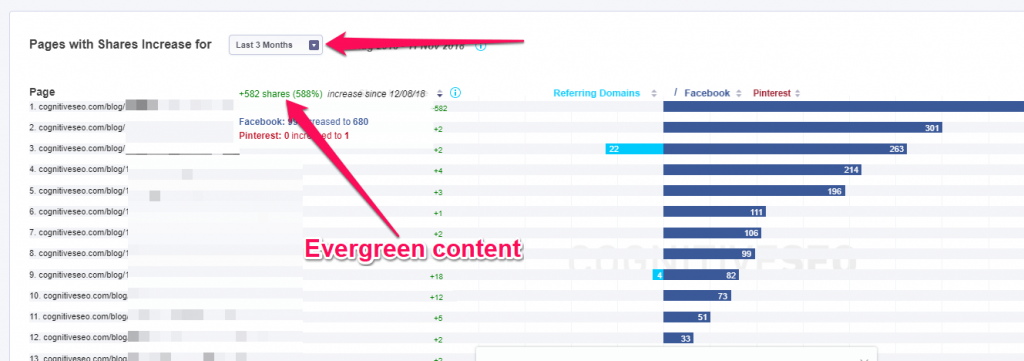
We looked at the data for the last 3 months to get the pages that are truly valuable. If you want to see evergreen content, we need to check the data for a longer period.
3. Get Email Notifications When Your Competitors Rankings Change
Triggering alerts to be notified on the spot when relevant tracking changes happen for keywords of your choice and your competitors’ can give you a sense of propriety in terms of what works in the niche as keyword-centric content. Of course, the alerts can be set on whichever keyword, for any changes that you wish to monitor.
Intelligence is the ability to adapt to change. Stephen Hawking
Of course, when saying keywords we actually refer to idea-specific articles, documented in-depth and relevant in the industry; the keywords are simply the instrument for measuring content efficacy.
Using an alert system can ease up a lot of work. In cogntiveSEO campaigns, you can create new alerts and get email notifications on any keyword rank fluctuation. For example, you can get a mail the moment your site or your competitor rankings drop for at least 3 positions in Google.
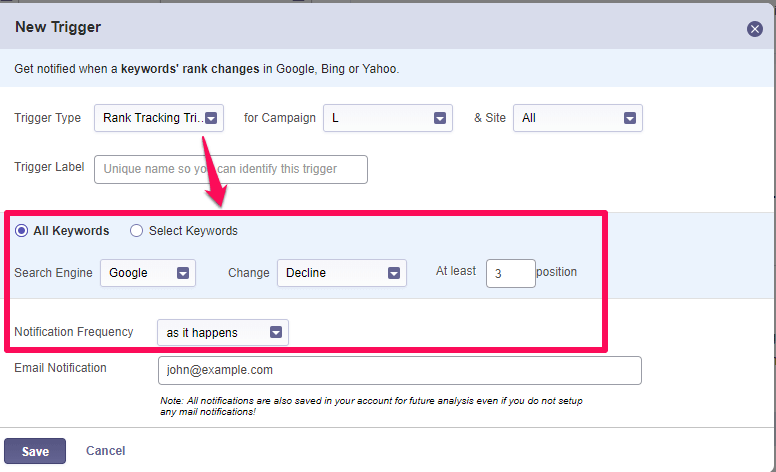
While it goes without saying that your strategy should be based on clear marketing objectives, knowing when to adjust them as to correspond to the trend is as imperative as having a plan in the first place. Consequently, you can choose to set alerts on cognitiveSEO tool for other areas that interest you as well, such as link building and changes on your backlink profile.
4. Link Reclamation – Recover 404 Pages Link Juice
There are all kinds of talks about opportunities you’re missing when not monitoring your competitors. Here’s one of the best examples. There are sites, in certain industries, whose products and services are the best part of a market share pie chart.
Monitor the broken pages of your competitors and contact the influencers. Link to their content and be a good Samaritan. This is a great chance of networking success and a link building opportunity. You know the saying – Sharing is caring.
Site Explorer is a great help in this case. You can find there broken pages in real time.
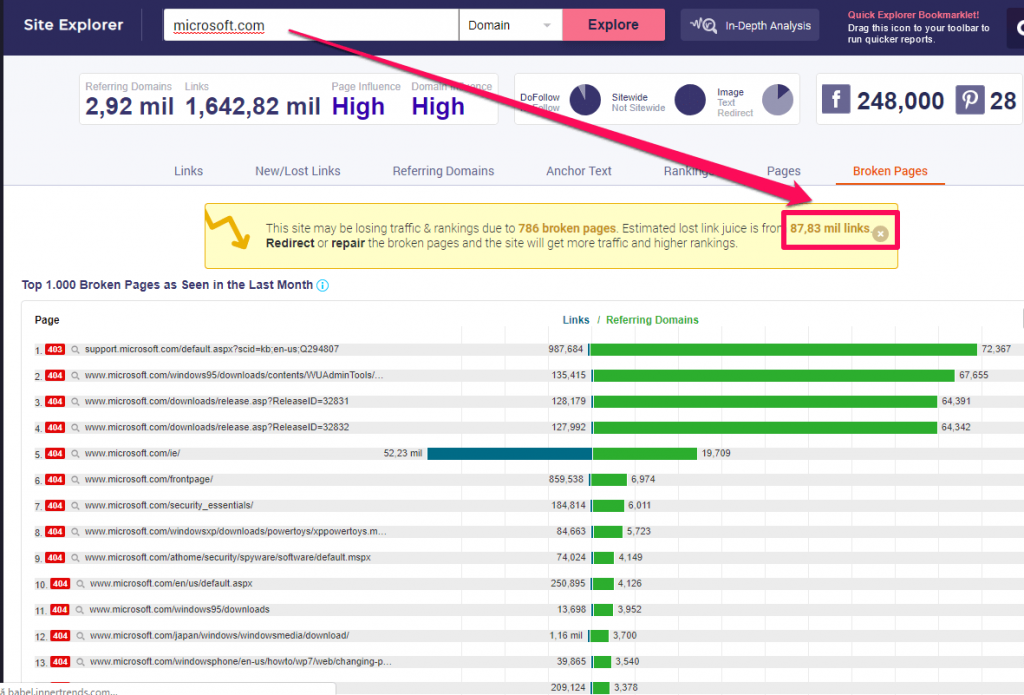
Of course, whenever it’s possible, you can also present good quality, topically related content of your own for them to easily recover from the mistake. Needless to say, monitoring broken pages of your own is a great asset in terms of preventing these unfortunate situations and Link Reclamation is an instrumental tool for your needs.
Most of the times, it doesn’t make a difference if you’re the owner of an internationally popular site or the one of a small, local business. The bottom line is that you’re as susceptible to lose valuable link juice anyway, just as you can see in the example above. However authoritative and reputable, from sites like Microsoft’s to the fresh start-up you’ve funded, you can’t afford to lose important links.
II. Find & Track Your Competitors’ Weaknesses
5. Track Your Competitors’ Social Mentions
Tracking what’s being said about you on social media is paramount. Approximately half of the people engaging on social media expect to get an answer in less than an hour. Being prompt means being dedicated and this is how loyalty is triggered. Of course, the nature of competitive advantages makes it impossible for you to offer the best there is in your niche on social media without constant monitoring your competitors’ social media activity.
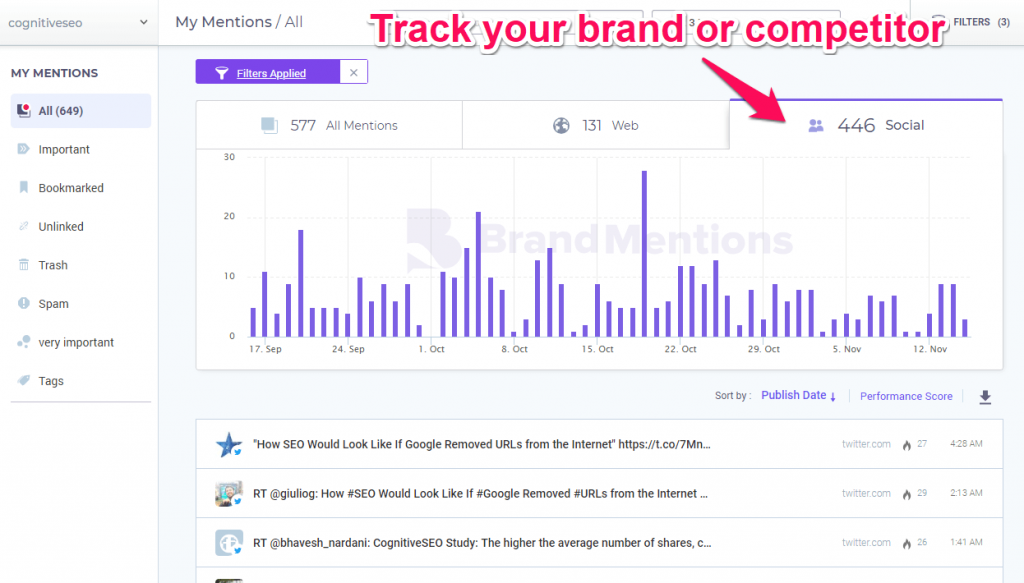
Moreover, monitoring the mentions of your competitors also allows you to respond to all kinds of questions addressed to them, in case they’re not as prompt.
Try being as impartial and objective as possible. Under no circumstance should you advertise your product while at it, just let your implication speak for itself.
This way, the prospects interested in the niche will get the idea that you’re serious and devoted to your mission. Although this sounds like a long shot, it actually converts if you use it wisely.
6. Research and Track Fresh Web Mentions
Same rules apply for web mentions. Whenever your brand is being brought up on the web, a marketing opportunity is rising – whether the mention is positive or negative, you should manage it on the spot using BrandMentions.
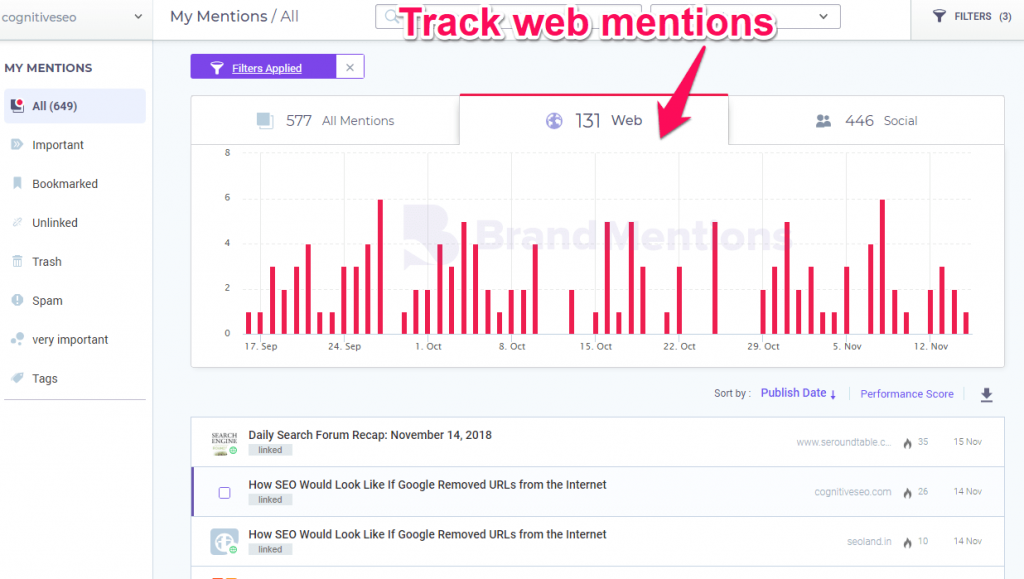
As far as your competitors are concerned, demystifying their online appearances gives you valuable insight into their content marketing strategies.
Generate top of mind awareness by implementing useful points for your own company’s objectives.
Of course, it’s not only influencers who mention brands on the web – many of the people are actually consumers. This is a great chance for you to better understand consumer behavior in an environment they consider familiar and which, as a matter of consequence, stimulates their honesty. Also, a mine gold opportunity is represented by finding unlinked brand mentions. Finding these link opportunities isn’t a ride in the park. It requires perseverance, attention, thinking outside-the-box, and also the right analysis tools.
Moreover, if you’d like to monitor the fresh web mentions for different keywords, you can always create an alert and be notified via mail on the most recent updates. You can turn this into a huge outreach opportunity.
7. Track Competitors’ New Links
Being instantly notified whenever you and your competitors have new links increases the chances of your marketing efforts to be doubled by great strategic insight with cognitiveSEO alerts.
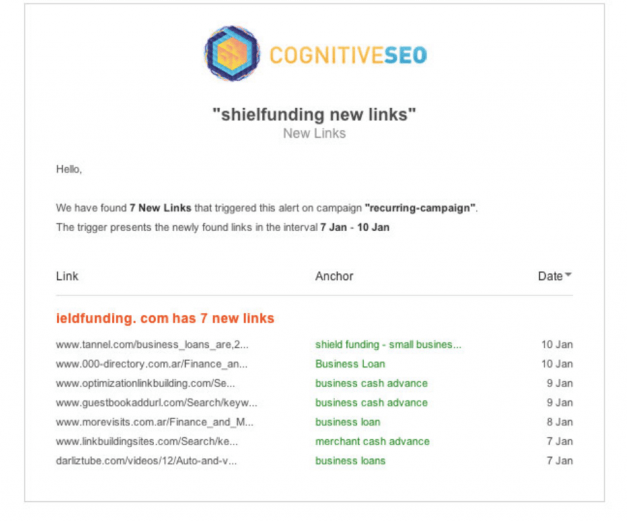
Knowing what kind of content influencers are interested in mentioning on their posts allows you to develop a functional strategy that can always be updated according to the trend.
8. How to Take Advantage of Your Competitors’ Google Penalty Risk
The Unnatural Link Detection tool is used to constantly monitor the profile naturalness of the sites – both yours and your competitors’.
Besides helping in detecting whenever you’re in danger of being penalized by the search engine, this tool is also useful to show you what’s working in the industry. You can either prevent or recover from penalties, and monitor your competitors’ strategies to know how they’re performing. Identifying their mistakes on time helps you avoid them in your approach.
Below you can see an example of a website that received lots of unnatural links and it’s at risk of getting penalized, if it hasn’t been already.
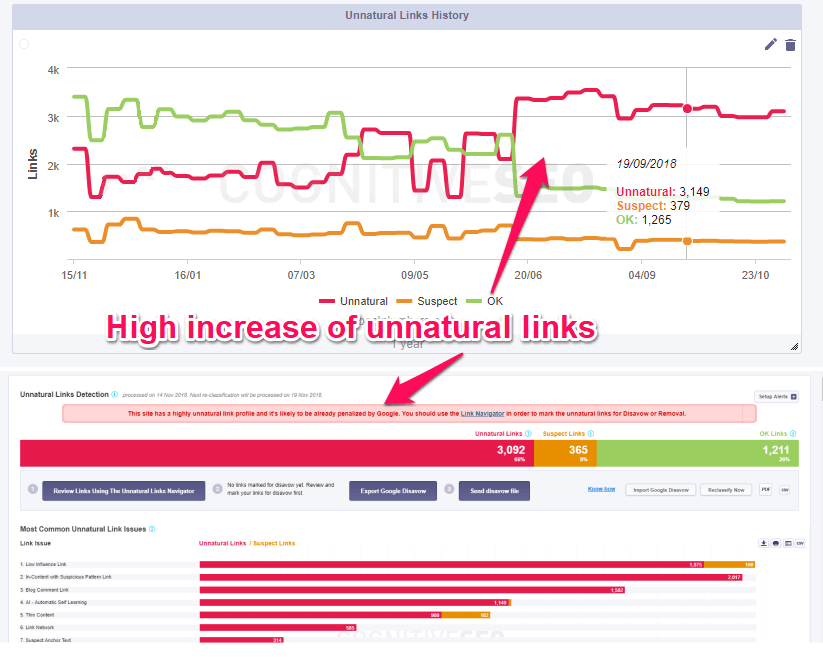
Different approaches, although sometimes very similar, may end in totally different results in terms of SERPs – keeping an eye on the numbers constantly provides you with practical insights on the trends.
Knowing the exact distribution of ok/suspect/unnatural links is especially useful when monitoring the spikes and tendencies. See what is that your competitors are doing right (or wrong) and monitor their practices so that you’ll debunk their strategies and borrow what’s advantageous.
III. Comprehend Your Competitors’ Strategies
9. Competitor Content Strategy Analysis to Boost Your Content Marketing Campaigns
I love that feeling when you enter a blog and notice that one piece of content has a particularly spectacular performance. Discovering the most efficient social media channel can give you an idea where your audience is. Also, you can find out what your next blog post should look like, with the Social Visibility module mentioned in the second strategy of this list.
But observing the overall picture of what works and what doesn’t in terms of social media shareability allows you to understand three important things:
- what readers are most interested in, which means they are willing to come back for more if you happen to give them actionable information two or three times in a row;
- what readers think their network may be interested in, which is an opportunity for you to exponentially grow on social media, supposing they know their contacts’ preferences;
- what content marketing development ideas you can borrow from your competitors and implement on your own site, including the general style of the articles in question.

10. Content Marketing – Track the Social Evolution of Your Competitors’ Content
Besides having a good standing point for an overview, it can also come in handy to look at some pieces of content contextually. You don’t have to be a mammoth in the industry to realize that there’s no easy way to outline the success or failure of your campaigns.
We all get that at some point, usually when it’s frustrating how your very in-depth approach has 5 Facebook shares and your competitors’ superficial article of less than 1500 words won the Internet. Context matters.

Spotting the VIPs of the latest reads grants you knowledge on the volatile trend – which, admittedly isn’t very easy to get.
11. Content Marketing – Monitor Fresh Topical Content in Your Niche & Create Better Content
Aside from monitoring web mentions on different keywords, you can also track new topical content – not because you wouldn’t have the greatest ideas for successful articles, but because BrandMentions provides you with fresh data.
It would be a shame to miss an opportunity to treat something extensively and create a massive, evergreen blog post that will still get a good social media score and links 3 years after you’ve written it.
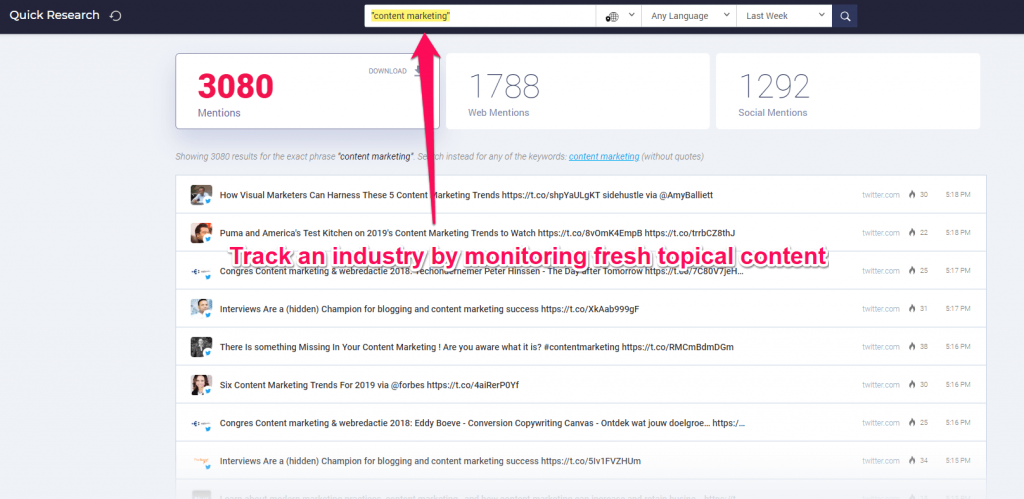
This topical comprehension can be used in crafting a creative road map that’s also going to be successful, following the latest trends.
12. Track the Speed of Your Competitor’s Website to Improve Your Rankings
Web Design is of uttermost relevance in user experience and it always has the last word when it’s a draw between two similar services (in terms of speed). But let’s not forget practicality. Technical data, such as the load time and the speed index are more important when it comes to building the loyalty of your website visitors. PageSpeed Insights is a great tool when monitoring a site’s performance.
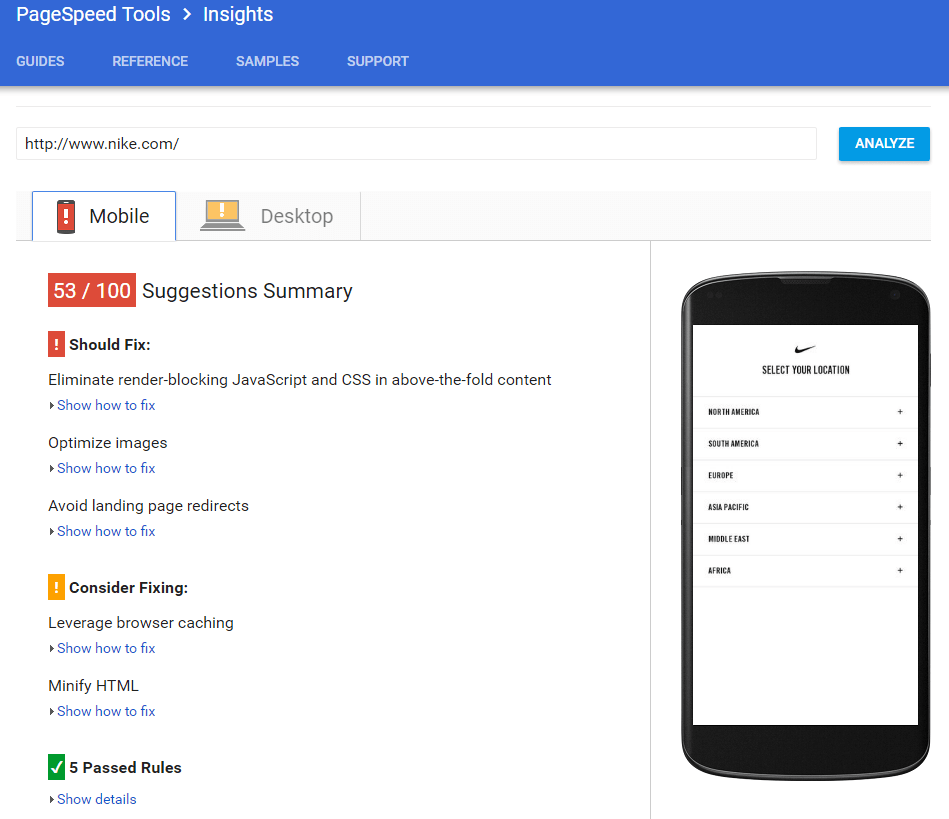
Your site is eye candy, the users won’t be tempted to close it, which would explain a good bounce rate, for instance. But when it comes to the entire experience, as a process, the website speed has a decisive role.
13. Competitive Intelligence – Spy on the Technologies Used on Your Competitors’ Sites
There are tracking platforms that allow you to see what’s behind popular, successful sites in your industry. Finding out what’s different can answer a dramatic lot of questions regarding the user experience and the functionality of the web page.
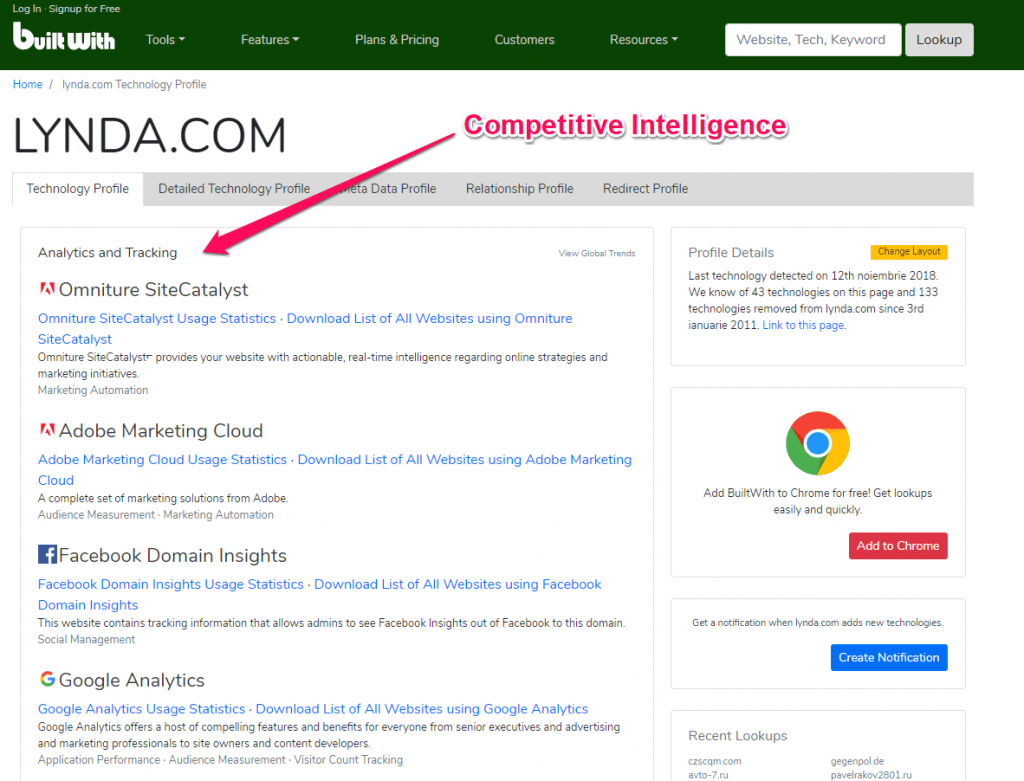
You’d like to always be in touch with what’s bringing success around you because this is suspicious when it comes to building business intelligence. Use BuiltWith to monitor your competition in this matter. It offers insights on internet technologies which include analytics, advertising, hosting, CMS and many more. Plus, it shows you the internet technology usage changes on a weekly basis.
Unmasking the strategies of your competitors you can merge different tips into a better formula that would best answer the needs of your audience.
14. Check Your Competitors’ Link Velocity Trend to Understand Their Business Evolution
As relevant as knowing new mentions in order to build a sustainable strategy, keeping in touch with the new referring domains of your competitors’ content detects fresh opportunities for your content marketing strategy.
The Site Explorer helps you gain a clear image of your link profile, in seconds, so that you can create further content that’s topically related and more in-depth, then trying to get in touch with editors on the sites that have the best authority. Knowing what editors from which sites are willing to share topics from your niche also frames your content approach and increases your chances for high-quality links. It is also a great competitor analysis tool because it allows you to do the same investigation as for your website.
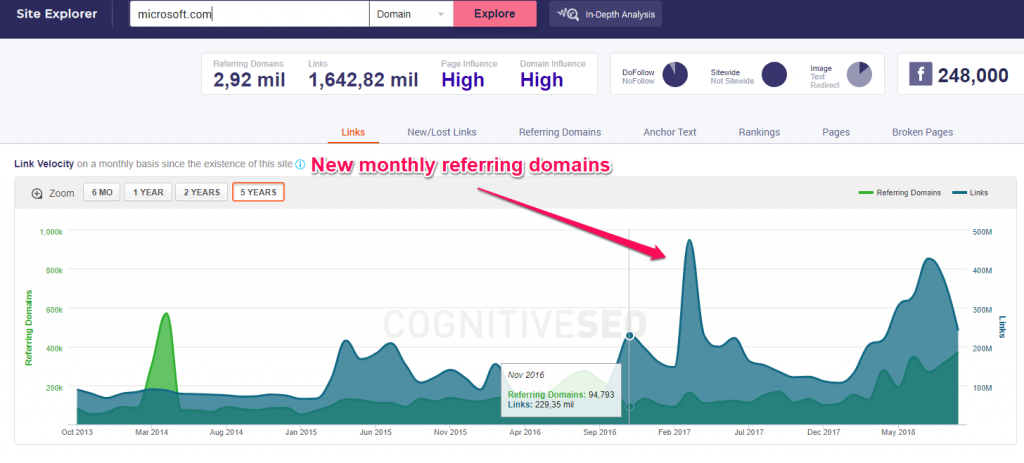
Link Building helps you boost your image in terms of SERPs, which is why having a monthly situation of your referring domains is beneficial in terms of monitoring your overall performance as well as debunking competitors’ SEO strategies. This last use of finding fresh referring domains linking to your competitors is spotting uncovered opportunities, maybe getting new ideas of influencers to reach out to.
Moreover, this can transform your online marketing efforts of getting links – instead of making aimless steps towards no-name sites and get maybe dozens of links, you can get a few ones from high authority, great performance domains.
15. Spy on Your Competitors Traffic Trend & Learn How Good They Really Are
Traffic growth itself is a gold mine, as you can use it to compare the content to the traffic performance and analyze your competitors. Get a better understanding and the best practices of topics that could work in your industry.
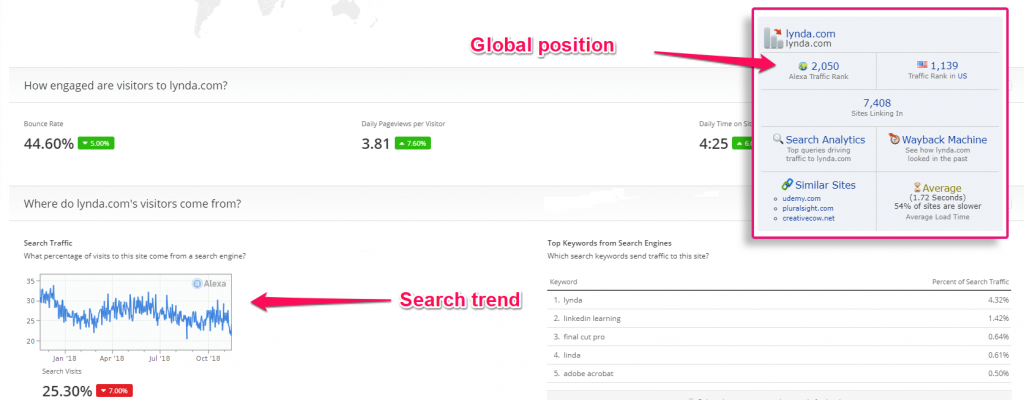
Aside from this, being able to compare performances gives a solid reality check, positioning your performance objectively, while also indirectly giving you insight on the strategies that best convert. Alexa helps you monitor your rankings and audience while also displaying a trend tendency compared to the global position.
16. Check Your Competitor’s Traffic Sources
There’s more than just readers and shares that make a site popular. If we’ve already established that contextualized information matters most, then where the traffic comes from is crucial when you’re trying to understand which strategic moves you should keep developing.
For instance, if bloggers in your industry seem to share a lot of topically related content and be open about tips and practices, you’re going to want to approach them. This would bring you a positive engagement rate on the web as well as social media.
But if you see that your competitors are cited in the press quite often and seem to make PR efforts to be as visible there, thus being cited by high authority sources and having a satisfactory ranking situation, maybe you’d like to try that as well.
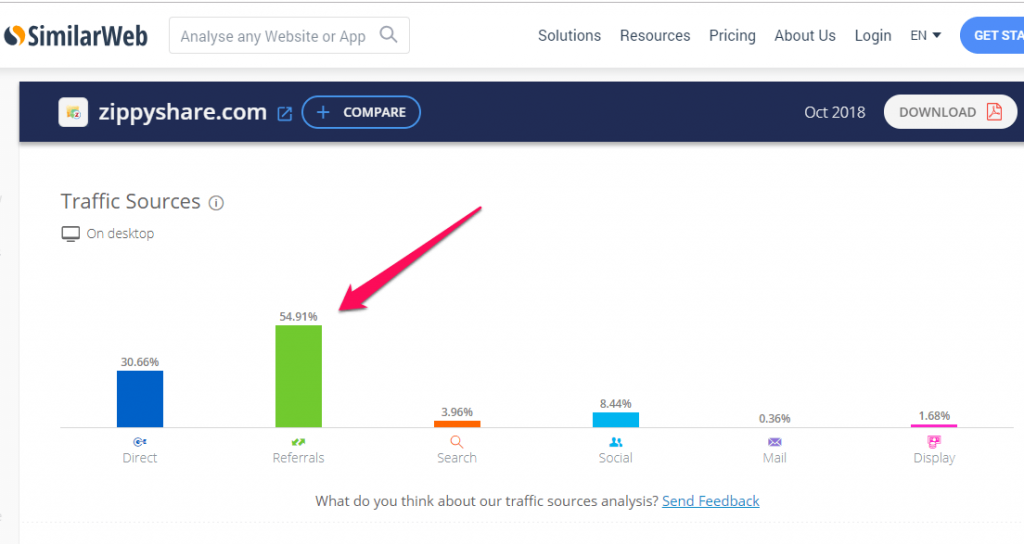
Of course, this gives you competitive intelligence as it debunks what the competition is doing. If they’ve got lots of readers coming straight from the in-mail newsletter, maybe you should get some inspiration from there. SimilarWeb is a similar tool to spy on your competition but it can be used as a complementary resource when it comes to connecting the general performance of a site with its traffic sources such as direct referrals, search, social, mail and display networks.
17. Track Your Competitors’ PPC Campaigns
Unravel the PPC strategy of the niche influencers to gain keyword-specific insights. It depends entirely on you how you decide to use that; either to copy that strategy for your own PPC or, depending on your position, to create a suitable strategy.
There are lots of tools for spying your competitors’ rankings. SpyFu is an example, that gives you the most profitable keywords and ads for paid and organic search. You can keep track of your competitors’ keywords. Below you can see a screenshot from the tool. You can get a list of all organic and paid keywords from your competitors. Besides that, there is an interesting feature called Google AdWords History which shows every ad campaign for all the keywords tracked plus information about costs.
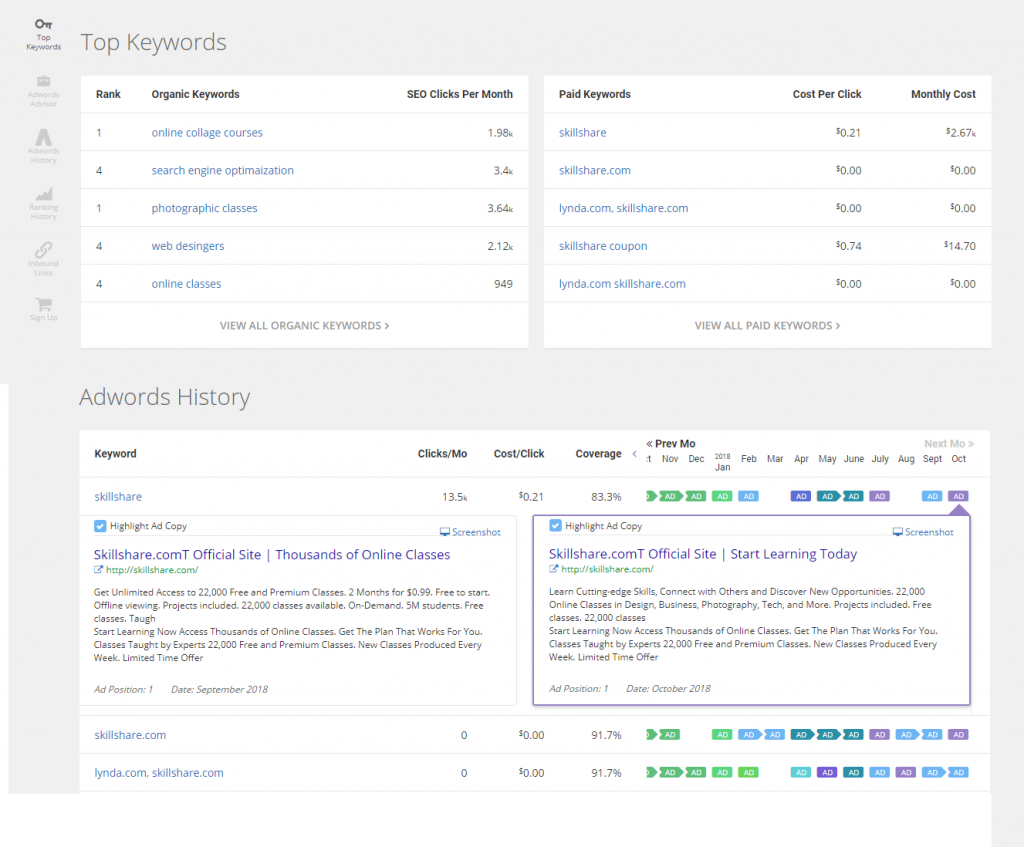
For instance, if you’re not ranking well, maybe you should try to move towards more popular keywords. If you’re already ranking top in your industry, perhaps it’s better to avoid association that would produce cannibalization, avoiding certain keywords that may steal your thunder.
18. Track Your Competitors’ Organic Keywords
Unlike paid keywords, organic ranking speaks for itself about the content and link building strategy of your competition. Identifying keywords and competitors separately helps you monitor the way each of them evolves in the niche.
It’s essential not to try creating promotion tactics without consulting the market and have a good overview of their performance and reasons so that you can leverage them to your advantage. Site Explorer shows you the top 20 keywords ranking in SERP.
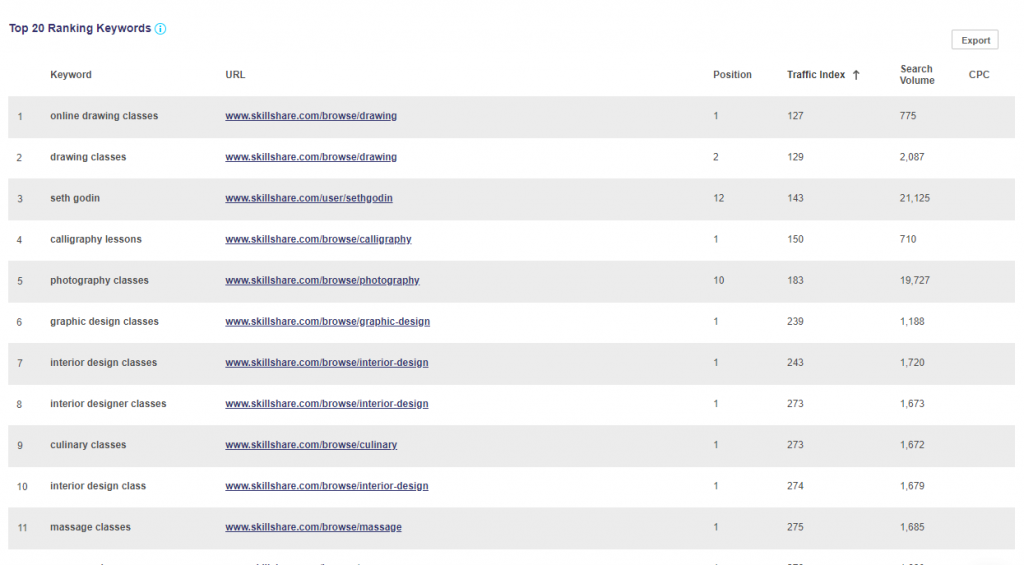
19. Monitor Your Competitor’s Site Indexation
Monitoring the way your site is indexed allows you to understand which content helps most and improve both your on-page and your off-page endeavors in order to gain popularity in SERPs.
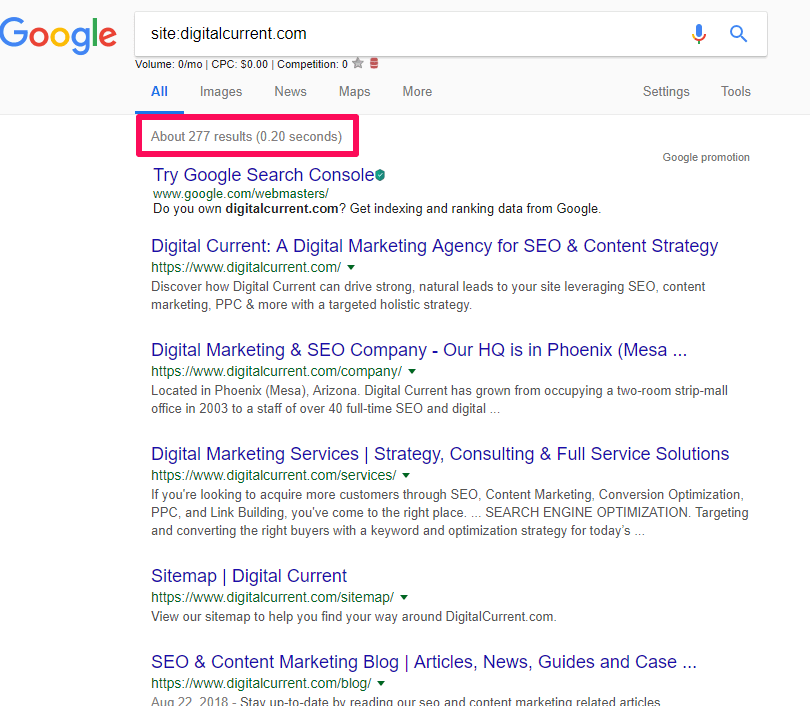
Of course, you’ll also know which pages are indexed and which not. Search for your site on Google and see how many results you’re returned. This may not seem clear enough until compared with your competitors’ performance, using the same method. While page indexing follows complex algorithms, including a site map, bookmarks and offsite content, spying on your competitors’ strategies can help you perform better.
For instance, blog content is crawled more often than a static website. Maybe seeing your competitor writing a blog post about their new feature on the site and linking to it will give you the idea to do the same in order to help the crawler easily find your content.
About Us and Contact pages start being more comprehensive and more customer-centric, as the search engines find it relevant to provide useful information to their users, therefore influencing the way your site is being crawled and indexed.
20. Track Your Competitors’ A/B Testing on Prices to Learn What Works Best for Them
Being a detective doesn’t always require a pipe, an old school hat and a long, dark coat. It mostly takes common sense and dedication towards your objectives. Of course, this and not rushing to a conclusion. I’ve mentioned before that we should be reluctant to hurried conclusions, as they may be the result of superficial analyses.
Instead, monitor all the aspects of your competition’s business and you can gain business intelligence and benchmark your results.
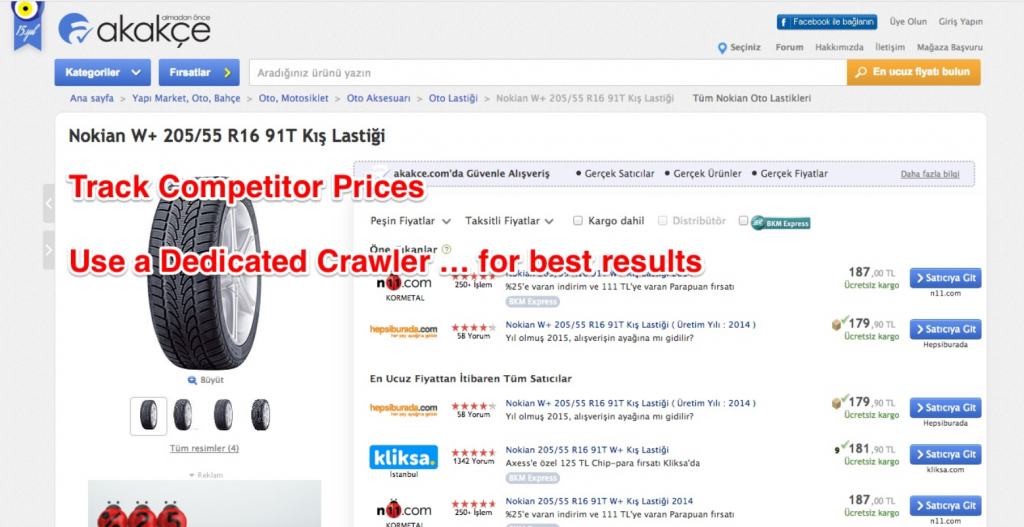
For instance, knowing competitors’ online prices allows you to get a good image of what a convenient pricing policy from your site should look like. Have they increased their prices? Maybe it’s time you made a discount to the following 100 customers. Be agile!
Using a dedicated crawler may help you be more specific and thorough when it comes to finding the most recent and exhaustive web pages. While using the search engine’s crawler can bring you great insight, when it comes to specific niches, it’s better to be more detail-oriented in your approach.
21. Stay Ahead of the Game by Tracking Your Competitors’ Facebook Pages
Insight on the social media progress can help you monetize your content marketing investment.
From posting at the right hours to only sharing interesting content that engages your audience, everything you want to know about Facebook performance lies in tracking Facebook pages whenever you think their strategies may divulge something of crafting successful businesses.
Pages to Watch by Facebook is an opportunity for businesses that have a page with more than 100 likes to analyze a ton of great suggested pages in their industry. It is a good practice for strengthening any social media strategy and get content ideas from direct competitors.
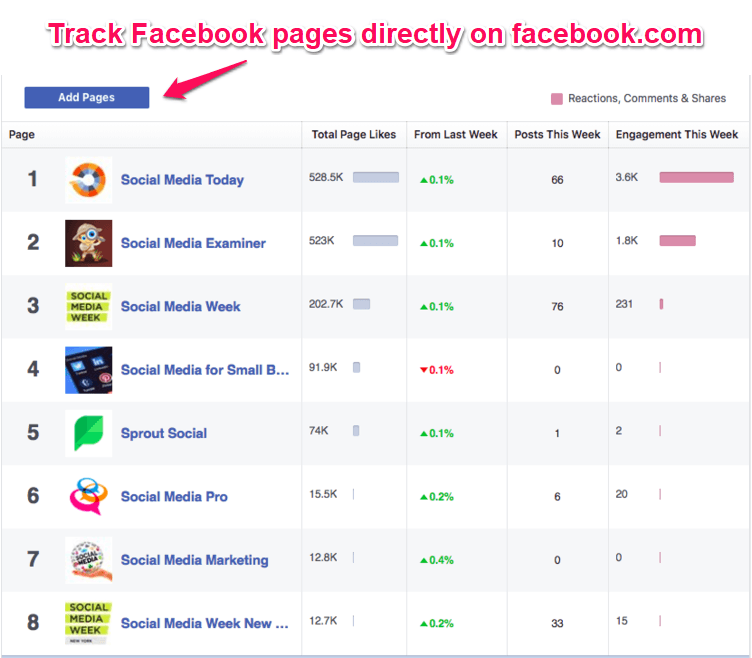
Additionally, you can compare different Facebook performances of your competition and match them a sum of reasons for which their visibility progress looks a certain way.
You can get compared statistics on the pages’ performance in a time interval of your choice. Their rate of success can be associated with the posts they shared in that time frame. Correlating these two sets of data can give you fresh ideas for strategic promotion.
22. Track Your Competitors’ Twitter Followers to Learn Their Follower Growth Strategies
As relevant as monitoring the Facebook pages of your competitors can be monitoring the Twitter performance – of course, this can vary from an industry to another and from a geographic area to another.
Klear – Social Analytics tracks the fan base growth on Twitter and other social networks over time for brands and profiles, both for you and your competitors. You can use it to keep track of your social media performance during a time frame.
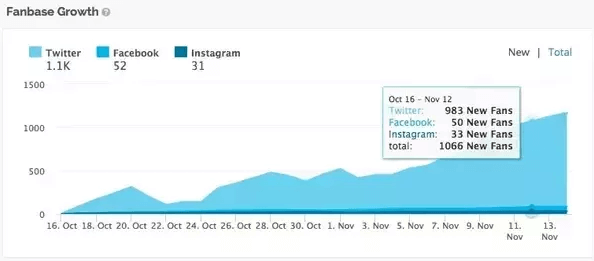
Depending on your niche, you might even weigh a site’s Twitter performance more than the one on Facebook, as in some niches it seems to be preferred for industry networking. From a marketing point of view, it’s there where most of the juicy conversations happen.
23. Track Your Competitors Youtube Views & Subscribers
As we’ve addressed the potential issues of different platforms, it’s quite necessary to talk about Youtube.
Whether you’ve got a channel through which you’re giving away great tutorials or your entire business is centered on Youtube, you should be up to date with your competition’s performance. Take a look at your competitor’s daily evolution and better understand the reasons behind their success – and maybe get an impulse to implement them yourself.
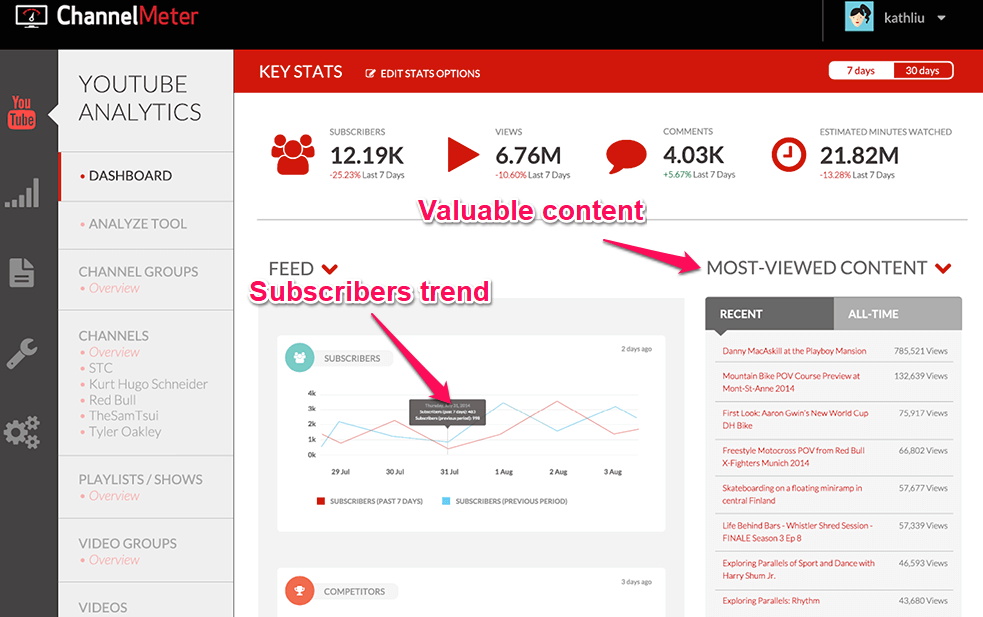
ChannelMeter provides you with YouTube analytics on different types of performance, from cumulative views to the number of subscribers and the daily evolution of a channel. Comparing channel performances gives you pragmatic insight on what goes best in your niche.
24. Study the Historical SEO Visibility of Your Competitors & Understand Their Growth Trends
What’s most useful about this widget is that we most often know what the former strategies of our competitors used to be.
Associating a performance level to their tactics may help you understand what worked and what not and, of course, establish which factors were temporary and which permanent.
After this, trying out some complementary steps that would work with your ongoing plans could help us boost our visibility and results.
The Search Visibility metric measures the performance of a site during the last two years, which makes it a very powerful chart if you’re tempted to debunk your competitors’ ups and downs, along with their strategies.
The results of this chart make a wonder when paired with the Wayback Machine, overlapping the content, link building and digital marketing strategies used by your competitors with the associated results.
IV. Beat Your Competitors at Their Own Game
25. Dominate Your Niche by Running In-depth SEO Visibility Audits
It’s not advised to make content marketing strategies at the expense of context, regardless of how individual you wish your brand to be seen as. It’s always best to know how every competitor in the niche is performing to have a consistent viewpoint.
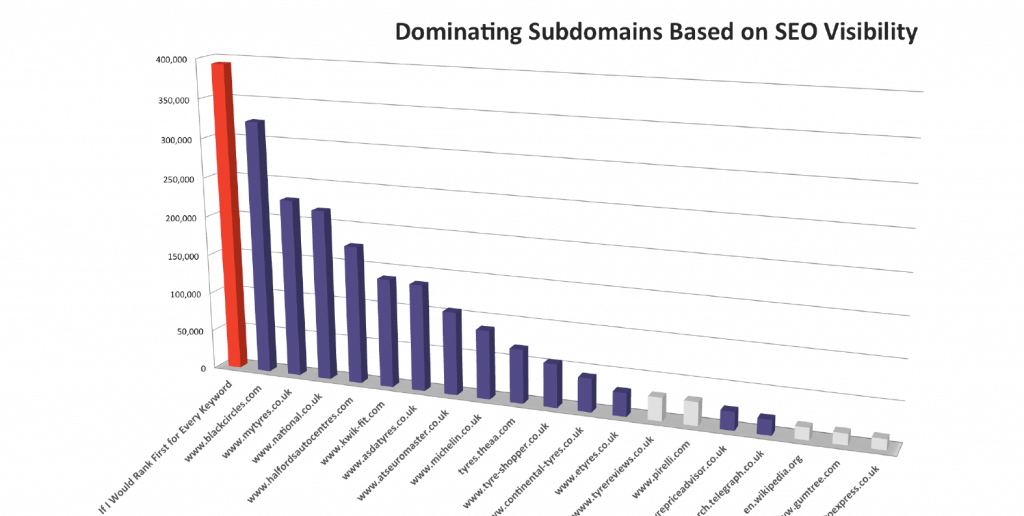
As you can see above in the comparison of the sites in the niche of tires in the UK, unmasking the performance of your direct and indirect competitors helps building solid and pragmatic strategies to boost web performance.
It’s impossible to be top-line when you haven’t demystified the links and ties that dictate who the influencers are.
26. Identify Link Building & Growth Strategies Using Advanced Backlink Fingerprinting Techniques
The mechanism of ranking relies, among many other factors, on being able to identify what works in terms of link building – a natural profile with social media shares and good authority doesn’t grow on trees.
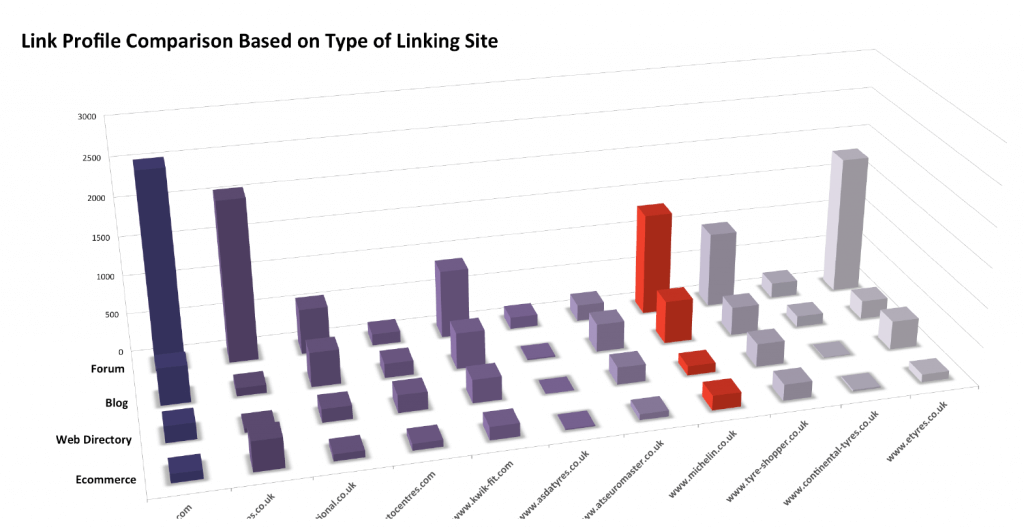
That is why looking over the fence allows you to see which eccentric and unconventional strategies are used, depending on the marketing objectives. As mentioned above, being linked by blogs usually comes with a higher social media engagement rate, which you can later analyze in our InBound Link Analysis module.
Clearly, there’s no universal rule, nor is there a recipe, just a bunch of approaches that work better than others.
27. Advanced Content Marketing Full Niche Audit Strategy
Relativity works in physics, love and copywriting equally.
Your social media premise should always be flexible, to the extent where content is almost exclusively delivered to correspond to the readers’ interest, the top hours when they’re most active and, of course, identifying patterns.
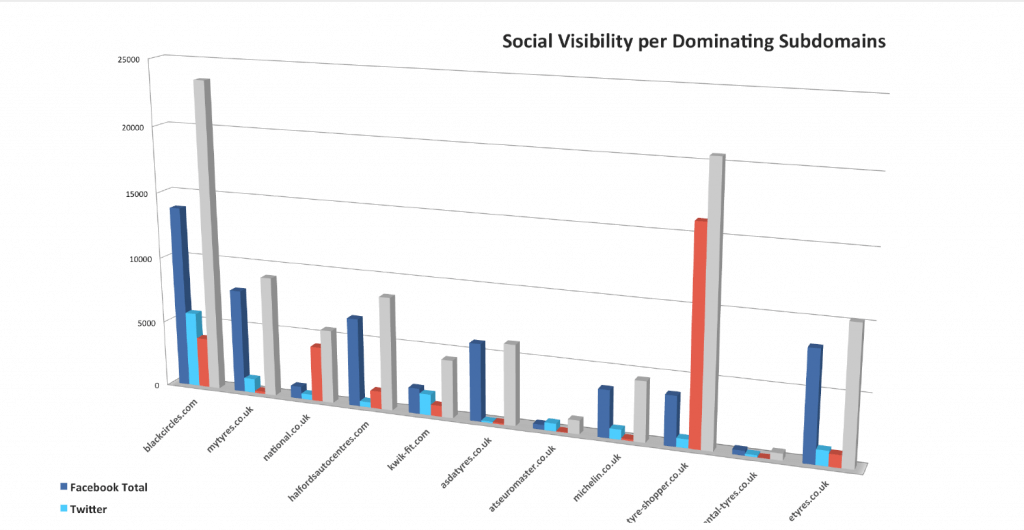
However, it’s not impossible to outline generic tendencies and try to leverage them to your advantage.
Conclusion
There’s no easy way to spy on your competition and it’s not as easy as math – because, unlike math, a pattern is never objectively defined when it comes to social media trends. It’s empirically observed and compared to a ton of criteria that spin the wheel of your audience.
What’s your source of inspiration when it comes to getting insights from your competitors?
Note: This article is an improved version of an older one we had. We considered this article to be valuable for those interested in outranking their competitors and the information needed a refresh because the online market is evolving very quickly.
The post 27 Unique Techniques on How to Effectively Spy On Your Competitors appeared first on SEO Blog | cognitiveSEO Blog on SEO Tactics & Strategies.
27 Unique Techniques on How to Effectively Spy On Your Competitors posted first on http://nickpontemarketing.tumblr.com/
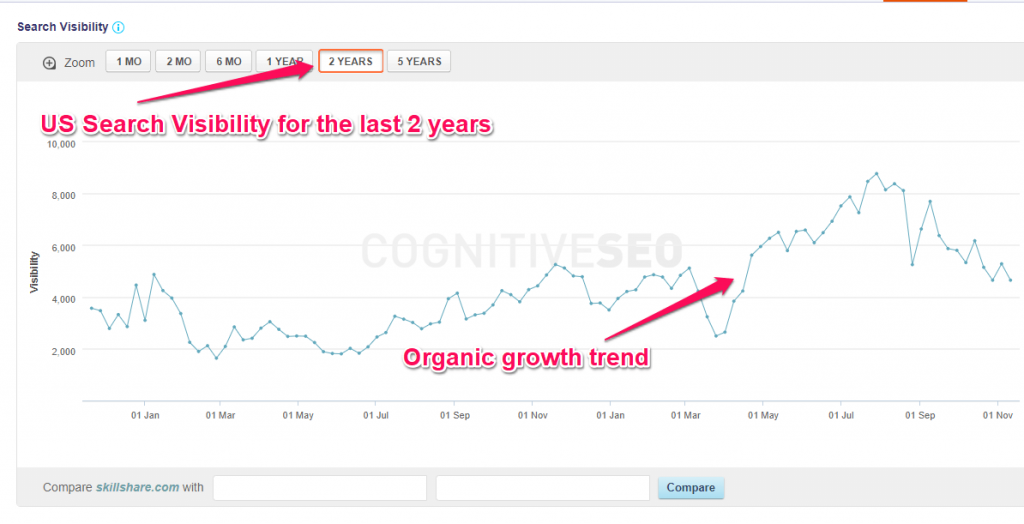
No comments:
Post a Comment